Family : Acanthuridae

Text © Giuseppe Mazza

English translation by Mario Beltramini
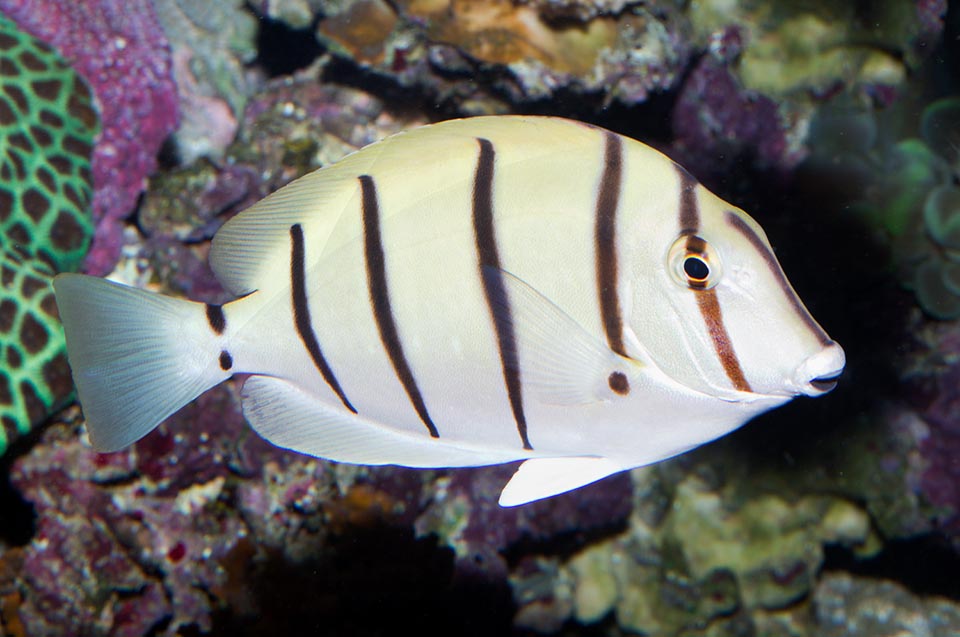
But the Arabian Peninsula coasts, Acanthurus triostegus has a very vast distribution in the tropical Indo-Pacific up to the Galapagos © Giuseppe Mazza
Convict surgeonfish (Acanthurus triostegus Linnaeus, 1758), belongs to the class of the Actinopterygii, the ray-finned fishes, to the order of Perciformes and to the family of Acanthuridae.
The name of the genus “acanthurus” comes from the Greek “akantha”, spine, and “ura” = tail, due the spine, shaped as a razor that these fishes have on the two sides of the tail.
The name of the species comes from the Greek “treis” = three, and “stego” = to cover, with reference to the branchiostegal membrane (the mobile membrane on the ventral and back side of the operculum which allows the breathing movements of the fish) protecting the gills and in this species has, seemingly, three rays instead of five as in the other Acanthurus. Actually, the other two do exist, but are small and hidden.
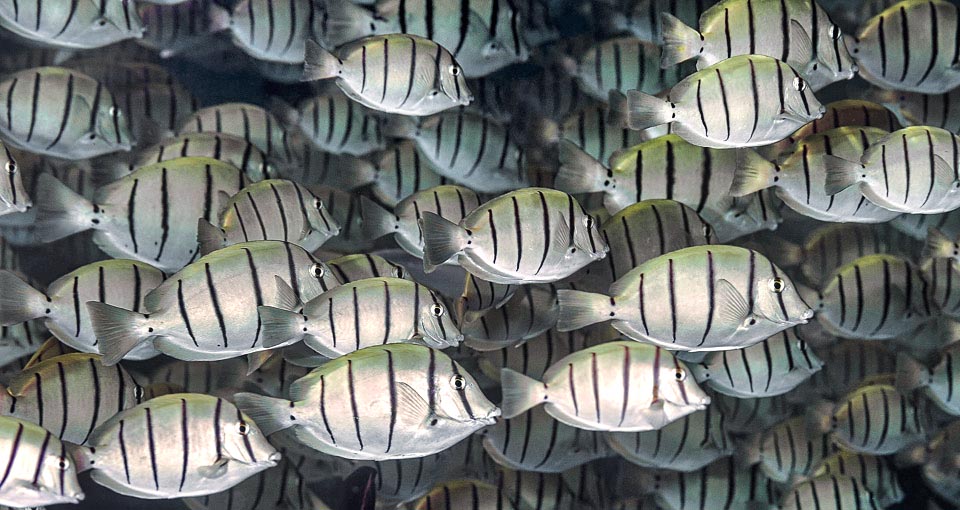
It can form large schools grazing filamentous seaweeds or in reproductive time, when females spawn thousands of pelagic eggs among clouds of sperm © François Libert
Zoogeography
The Acanthurus triostegus has an incredible vast diffusion, in the tropical waters of the Indian and of the Pacific oceans, and unlike the Acanthurus dussumieri and the Acanthurus lineatus it reaches also California and goes southwards along the American coast up to Panama.
Ecology-Habitat
It lives in the madreporic formations, but also offshore, going down up to 90 m of depth. Often, it grazes also close to the discharges of fresh water looking for seaweeds growing on the stones.
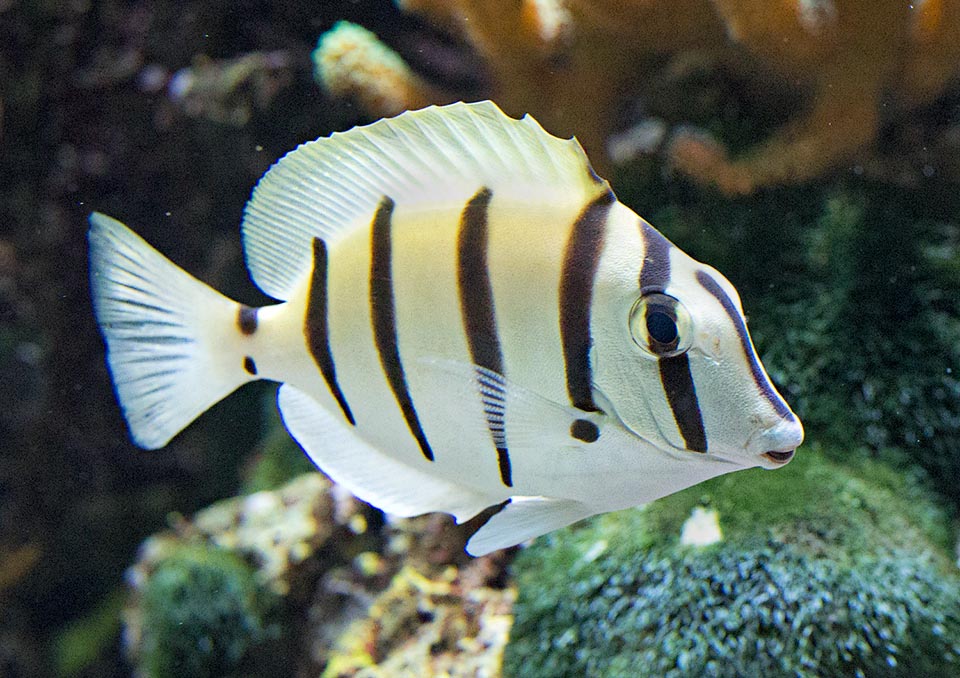
The body, silver grey on the sides, tending yellow-olive in the upper part, is grooved by five showy vertical lines, plus a thin one crossing the snout © Giuseppe Mazza
Morpho-physiology
It reaches the 27 cm, but the average length is of 17 cm. Flat, almost oval, it has a great dorsal fin with 9 spines and 22-26 soft rays. The anal, symmetrical and shorter, has 3 spiny rays and 19-22 unarmed. The ventral fins count one spiny ray and 3-5 soft, the pectoral ones 14-16 soft rays and the caudal is more or less truncated.
The body, silvery grey on the sides, tends to the olive-yellow in the upper part. It is crossed by five black vertical bands: the first disguises the eye, the second stops at the pectoral and the following three cross practically the whole body.
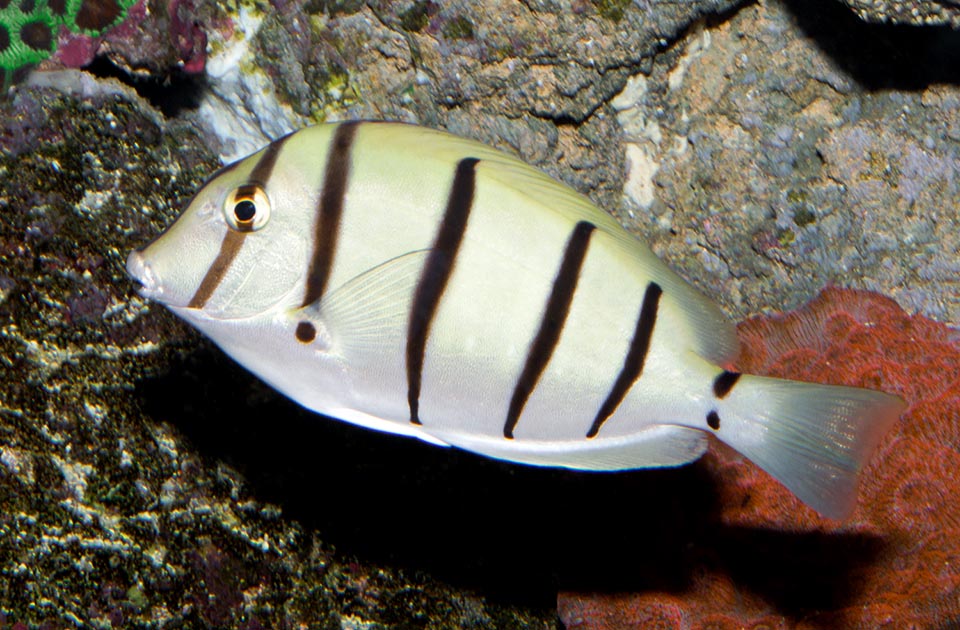
Also on the caudal peduncle is hinted an incomplete band, whilst is not highlighted, as normal, to warn intruders, the case from where gets off the sharp defensive blade typical to the Acanthurus. Obviously it is not needed: the livery is very easy to remember and the aggressors know well that they will be greeted with sharp lashes © Giuseppe Mazza
At the level of the caudal peduncle, we note the hint of a sixth band, stopped halfway by the erectile and cutting spine, typical of the genus, placed in a housing of the same colour of the body. Also here, as for the Acanthurus lineatus, the fish is unique indeed and the predators are aware of this.
Also the head, elongated, has its black band, with fleshy lips, and has tiny teeth. Several gill rakers are visible.
Ethology-Reproductive Biology
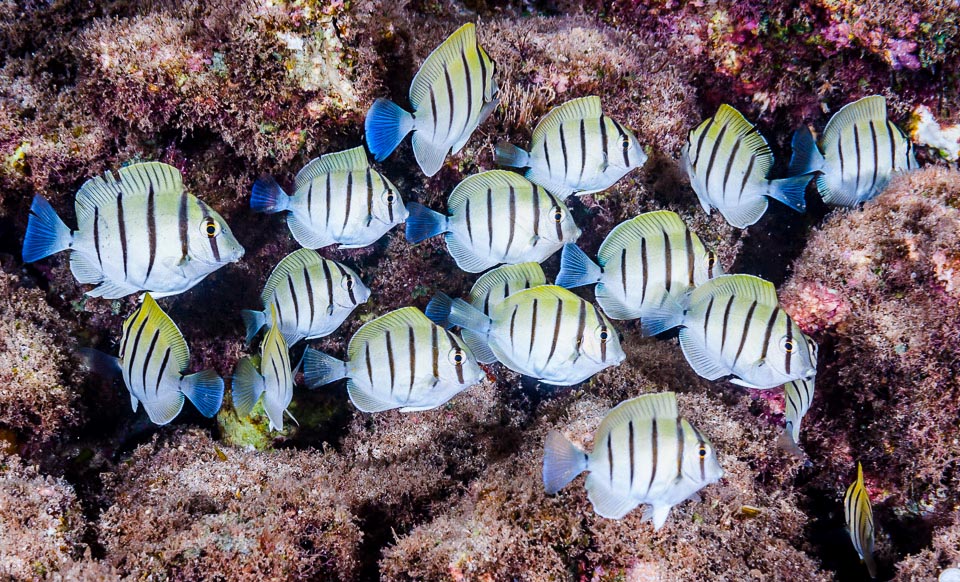
Grazing juveniles. The adults reach even 27 cm of length, but depending on what they graze the flesh can be at ciguatera risk, a serious food poisoning © François Libert
It often swims in crowded schools looking for edible filamentous algae: the juveniles in low waters and even in the tidal pools, the adults amongst the corals and the rocks. They nourish also of zoobenthos, in particular of foraminiferans of the genus Calcarina, phytoplankton, cnidarians and small benthic crustaceans.
The reproduction is collective with clouds of pelagic eggs and sperm, a golden opportunity for the birds of prey which often take advantage of the commotion.
It is fished and consumed locally, even if, depending on what they have grazed, the risk exists of getting a serious alimentary intoxication called as ciguatera.
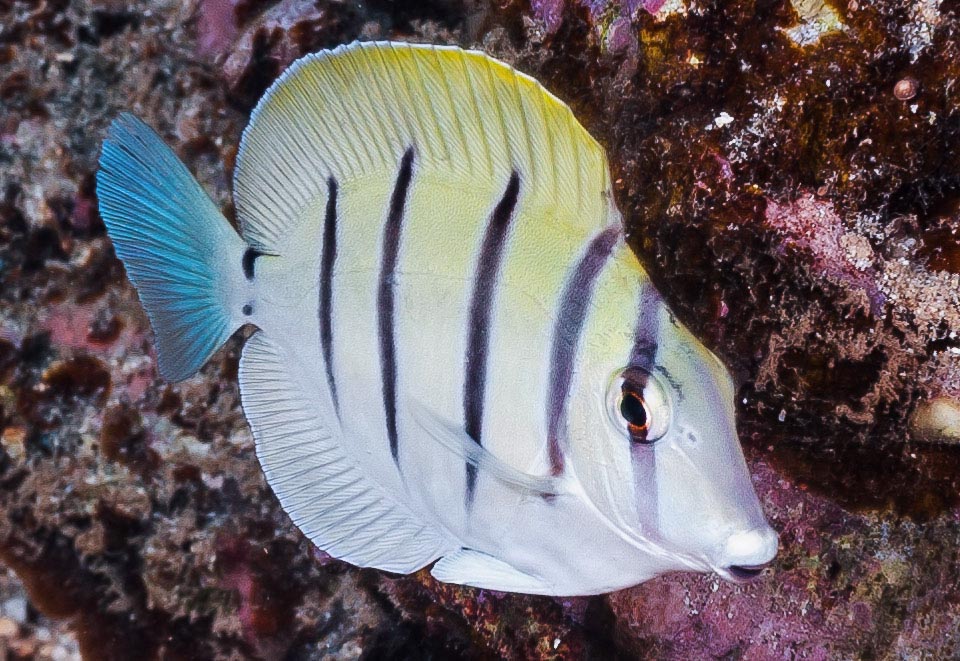
Due to their low cost, the young often end up in the home aquaria where they die of hunger and stress. Luckily Acanthurus triostegus is not an endangered species. © François Libert
It is a species with an extremely low rate of vulnerability: 16 per 100, with populations that can double in 1,4-4,4 years.
Synonyms
Chaetodon triostegus Linnaeus, 1758; Hepatus triostegus Linnaeus, 1758; Rhombotides triostegus Linnaeus, 1758; Teuthis triostegus Linnaeus, 1758; Harpurus fasciatus Forster, 1801; Acanthurus zebra Lacepède, 1802; Chaetodon couaga Lacepède, 1802; Teuthis australis Gray, 1827; Acanthurus hirudo Bennett, 1829; Acanthurus subarmatus Bennett, 1840; Acanthurus pentazona Bleeker, 1850; Rhombotides pentazona Bleeker, 1850; Hepatus sandvicensis Streets, 1877; Teuthis sandvicensis Streets, 1877; Teuthis elegans Garman, 1899; Teuthis troughtoni Whitley, 1928.
→ For general information about FISH please click here.
→ For general information about BONY FISH please click here
→ For general information about CARTILAGINOUS FISH please click here.
→ To appreciate the BIODIVERSITY of BONY FISH please click here.
→ To appreciate the BIODIVERSITY of CARTILAGINOUS FISH please click here.
